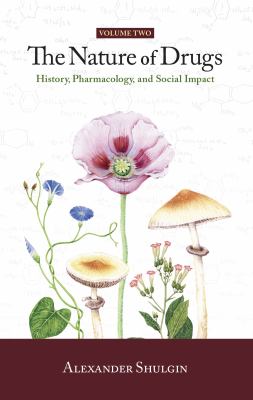| Stimulants I | 1 |
| The psychotropic states and their five classifications | |
| Stimulation in the nervous system | |
| Caffeine in widely consumed substances | |
| Methamphetamine, amphetamine, and other synthetic stimulants | |
| Possession, conspiracy, intent, misdemeanors, and felonies | |
| Stimulants II | 35 |
| Tobacco, nicotine, and blood levels of carbon monoxide | |
| The history of smoking as a practice | |
| Cancer | |
| The origins of tobacco and its spread around the world | |
| Cigarette advertising | |
| Stimulants III | 67 |
| Cocaine, crack, and coca leaves | |
| Bureau of Narcotics drug licensing and scheduling | |
| The production of cocaine in South America | |
| The accuracy of autopsy analysis | |
| The medical use for cocaine | |
| Depressants I | 99 |
| The opium poppy: origins, botany, and effects | |
| Treatments for heroin addiction | |
| Serturner, Davy, and self-experimentation | |
| Morphine and its ability to cause indifference to pain | |
| Pathways of opioid metabolism | |
| Depressants II | 129 |
| "Narcotics are not particularly damaging to the body." | |
| MPTP and its connection to Parkinson's disease | |
| Designer drugs and analogs to fentanyl | |
| Drug abuse versus drug laws | |
| Depressants III | 159 |
| An order of magnitude | |
| Observable signs of intoxication | |
| Chromatography | |
| Alcohol analyses via blood or urine | |
| The five major barbiturates | |
| Intoxicants | 189 |
| Why people do drugs | |
| The origins and uses of nitrous oxide | |
| Amyl nitrite and ephedrine; chloroform, ether, and phosgene | |
| Nutmeg, parsley, dill, apiole, and cloves | |
| The active alkaloids in betel nut | |
| Deliriants | 223 |
| The chemistry of neurotransmitters | |
| Love apples, thorn apples, Angels trumpet, datura, and belladonna | |
| PCP and ketamine | |
| The notion of personal choice as it pertains to drug use and addiction | |
| The government regulation of controlled substances | |
| Peyote | 253 |
| The biology of peyote | |
| Indigenous uses of peyote | |
| The Native American Church and peyote ceremonies | |
| Peyote alkaloids | |
| The difference between peyote and mescaline | |
| Psychedelics I | 283 |
| Phenethylamine and the misuse of terminology | |
| The question of drug potency and metabolic disposition | |
| Effectively doubling dosages | |
| The 10 Ladies of unique hydrogens | |
| Clinical use of MDMA | |
| Psychedelics II | 317 |
| Drug scheduling and the Emergency Scheduling Act of 1984 | |
| Short-term and long-term effects of MDMA | |
| Mescaline analogs | |
| Indoles and hallucinogenics | |
| Drugs originating from South America and their traditional use | |
| Psychedelics III | 351 |
| Continued discussion of indoles | |
| Set and setting | |
| Ergot and St. Anthony's Fire | |
| Sansert, LSD, "Narcotic Farm," and Harris Isbell | |
| Talking a person through a "bad trip" | |
| Prescriptionals | 383 |
| Ergot alkaloids, lysergic acid, Albert Hofmann, and Sandoz | |
| Wholesale costs of prescription drugs; stress clinics and Quaaludes | |
| The two-story narcotics laboratory in Stockholm, Sweden | |
| DNA, proteins, enzymes, hormones, amino acids, polypeptides | |
| The science of the morning-after pill | |
| Cannabis | 411 |
| Experiment to determine genotypic knowledge in marijuana plants | |
| The Bureau of Narcotics and Dangerous Drugs, the Marijuana Act of 1937 | |
| A compliance visit from the DEA | |
| Marijuana's origins in China | |
| The government's attempt to synthesize THC | |
| Cannabis and LSD | 445 |
| Field test kits for evidence of drug use | |
| Crime labs and drug exemplars | |
| Voir dire and being called as an expert in a criminal case | |
| LSD flashbacks | |
| Refractory periods with LSD and cocaine | |
| Afterword | 475 |
| Index | 481 |
| Table of Contents provided by Ingram Syndetics. All Rights Reserved. |

